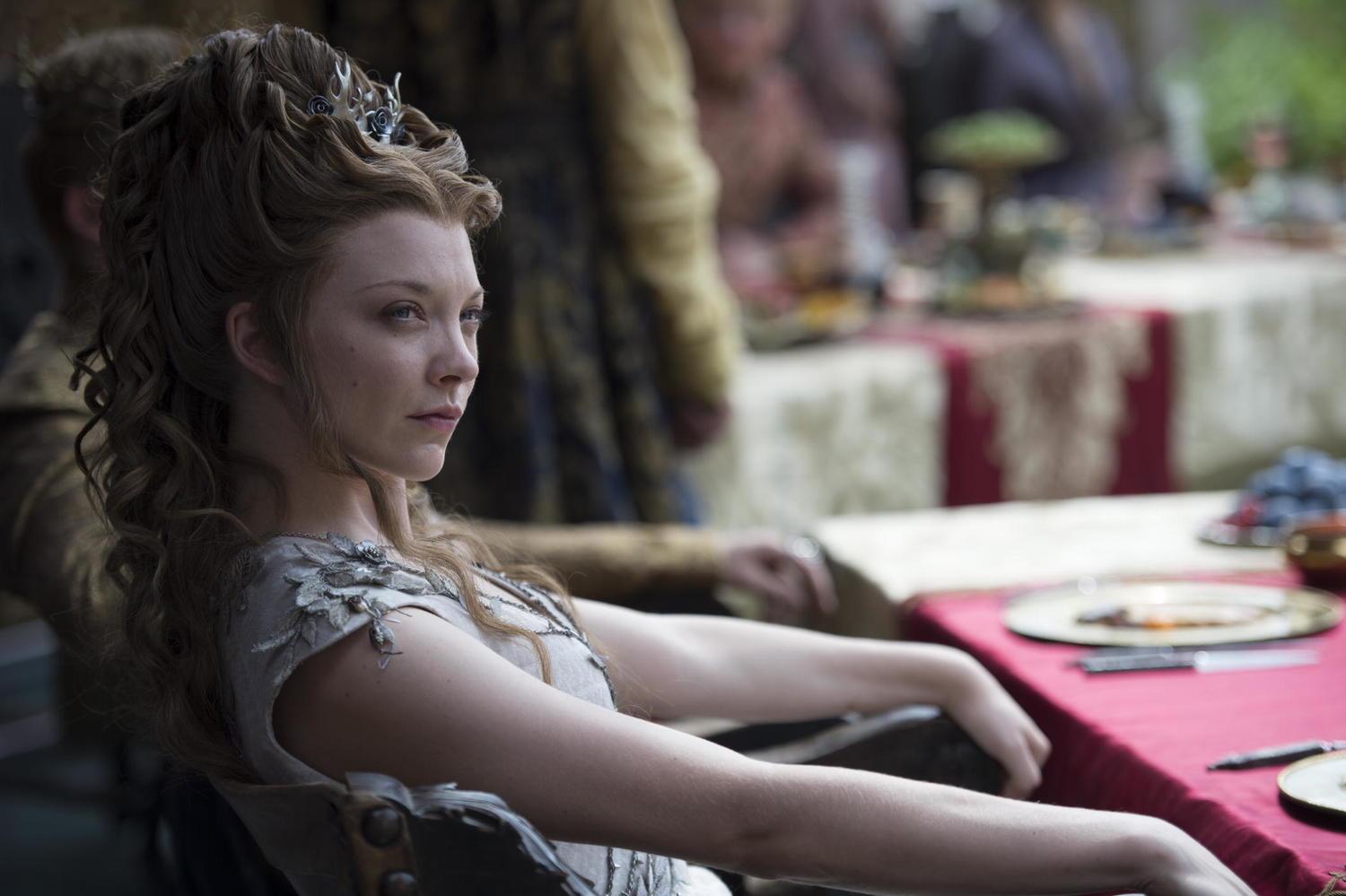
With Season 7 of Game of Thrones behind us and the long wait for Season 8 ahead, we have more than enough time to take a few trips down memory lane with Game of Threads. This is particularly exciting because I now get to discuss my absolute favorite GoT character and resident Westerosi trendsetter, Margaery Tyrell.
Ever the shrewd politician, Margaery Tyrell carved a career out of allowing people to think that she was defined by things like her husband’s power, her family’s wishes, and even the clothing she wore. Every sartorial choice had a specific motive and changed to accommodate a specific audience. This of course allowed her character to go through major fashion changes virtually every season, but it wasn’t so much an “evolution” as it was a carefully calculated strategy.
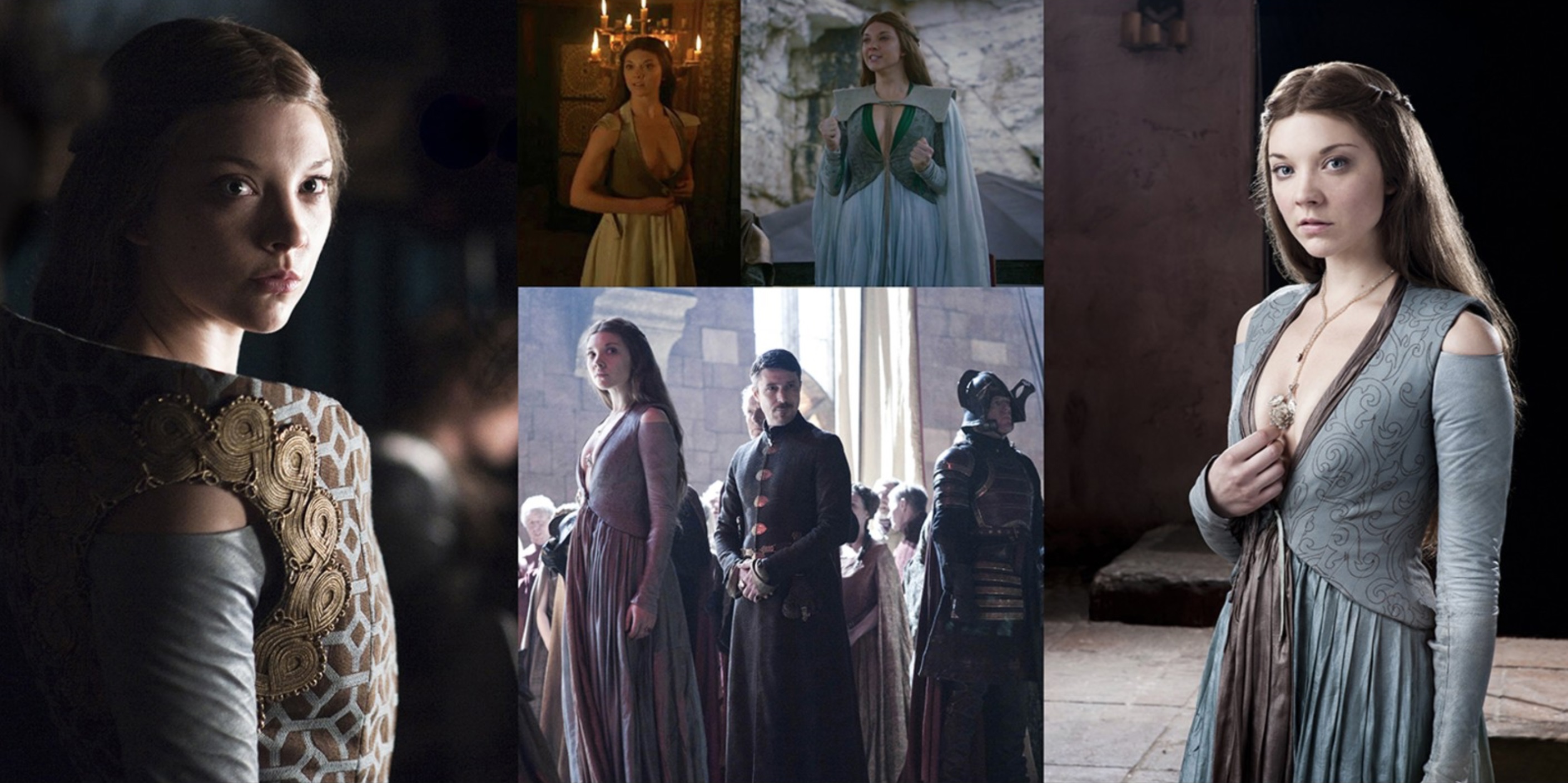
In Season 2, Margaery is introduced as King Renly Baratheon’s new wife- a political and financial marriage designed to put a member of the matriarchal Tyrell house on a throne. While with Renly, she was able to be a bit more avant-garde with her style, knowing her husband’s penchant for the finer things in life. She no doubt hired up-and-coming dressmakers to create new and exciting looks that had never been seen before in the Seven Kingdoms.
Still, she was in the blustery Stormlands so she had to take warmth into consideration as well. Her signature plunging neckline is the only peek of skin we see in her first scene, which ties her to the skin-baring styles of the Reach. She is all but swallowed by the billowy fabric of her cape, though. Margaery is then, once again, swallowed by the now infamous cone dress (an homage to Alexander McQueen and Björk’s 2004 “Bell Dress”), another iteration of her fashion-forward thinking, as well as her understanding that there, in that camp, she is Queen. All of the men are sworn to her family and she knows and accepts her husband’s love for her brother, so she doesn’t need to deploy the hyper-feminine and sensually-charged gowns.
Only when she is tasked with seducing Renly into procreation does she wear a gown that is reminiscent of what we would come to see her wearing for the majority of her time in King’s Landing. In fact, the “seduction” dress is the exact pattern of the dress she wore in Episode 304 when she convinced Joffrey to step outside the Sept of Baelor and greet his subjects.
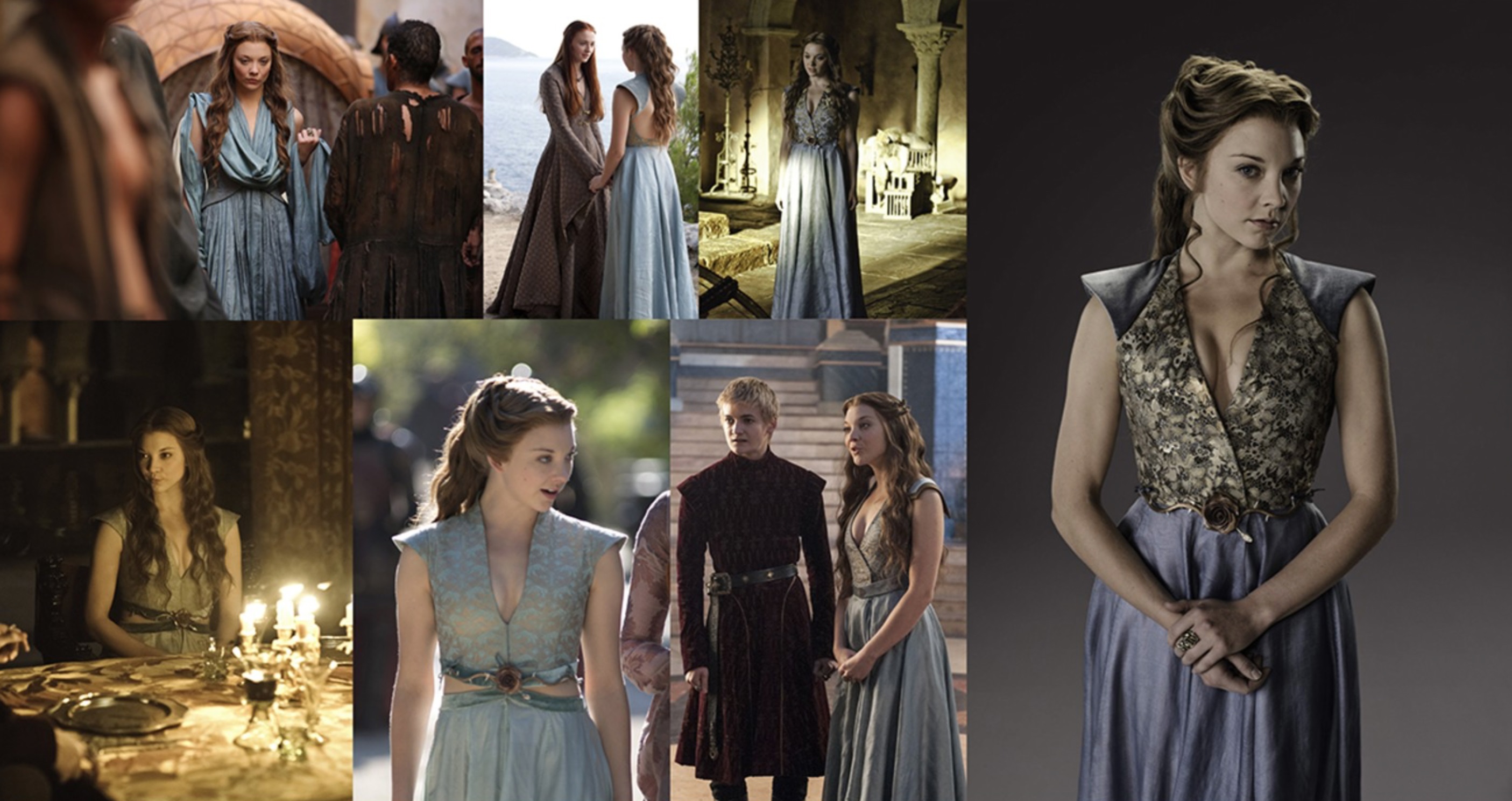
With Joffrey, Margaery’s approach is the polar opposite of the avant-garde mindset with her now-murdered husband Renly. Her gowns are still beautiful feats of fashion, but the focus is less on the dress and more on her body. Michele Clapton does a really nice thing with Margaery in that in each new season premiere, she dresses her in a costume that she wore in the previous season so as not to completely change the look on a dime. The dress she wears to the orphanage in episode 301 is the same dress she wears in the throne room in episode 210 when she is betrothed to Joffrey, only the sleeves are removed and she wears a draped shawl over her shoulders.
Throughout the rest of Season 3, she wears four different dress variations on a theme, all in the soft blues and golds of her house. She knows what works for her and that’s deep necklines, no sleeves, and back cutouts. As the season progresses, she takes it even further by sweeping her hair off of her shoulders to show more of her neck, but not everything is about sexual seduction. The minimalist nature of the dresses also makes her seem approachable in befriending Sansa, as well as to the adoring masses of the capital, and firmly cements herself as the newest trendsetter in King’s Landing, much to Cersei’s dismay. Ladies of the court begin wearing sleeveless dresses and styling their hair up like hers.
Still, there are subtle meanings in the smallest of details, and Margaery and Cersei enter a battle of clothing. The golden rose-and-thorn belt she wears is in direct reflection to Cersei’s ostentatious lion adornments that are already in full force. Additionally, Margaery and her brother Loras both wear laser-cut golden leather pieces to Sansa and Tyrion’s wedding, furthering the idea of their own elegant armor with their family sigil emblazoned on their chests.

By Season 4, Margaery is set to wed Joffrey, and her wedding dress checks off every style box. It is backless, sleeveless, and cleavage-baring, but it is also, at first glance, approachable and soft- until you look closer. On a production note, the whole gown was cut from one single piece of fabric, rendering the technical aspects of building it even more difficult. The Tyrell rose and vines are unmistakable in appearance and meaning: she is about to wrap Joffrey in the snare. Even both of their wedding crowns, while having a base of Baratheon antlers, are being overtaken by Tyrell roses and thorns. She is about to become the most powerful woman in the Kingdom and that shows in her gown, as well as in her elaborate hairstyle, in which she and Cersei compete for the higher coif. Until it all goes pear-shaped and Joffrey is poisoned by her grandmother, Olenna.
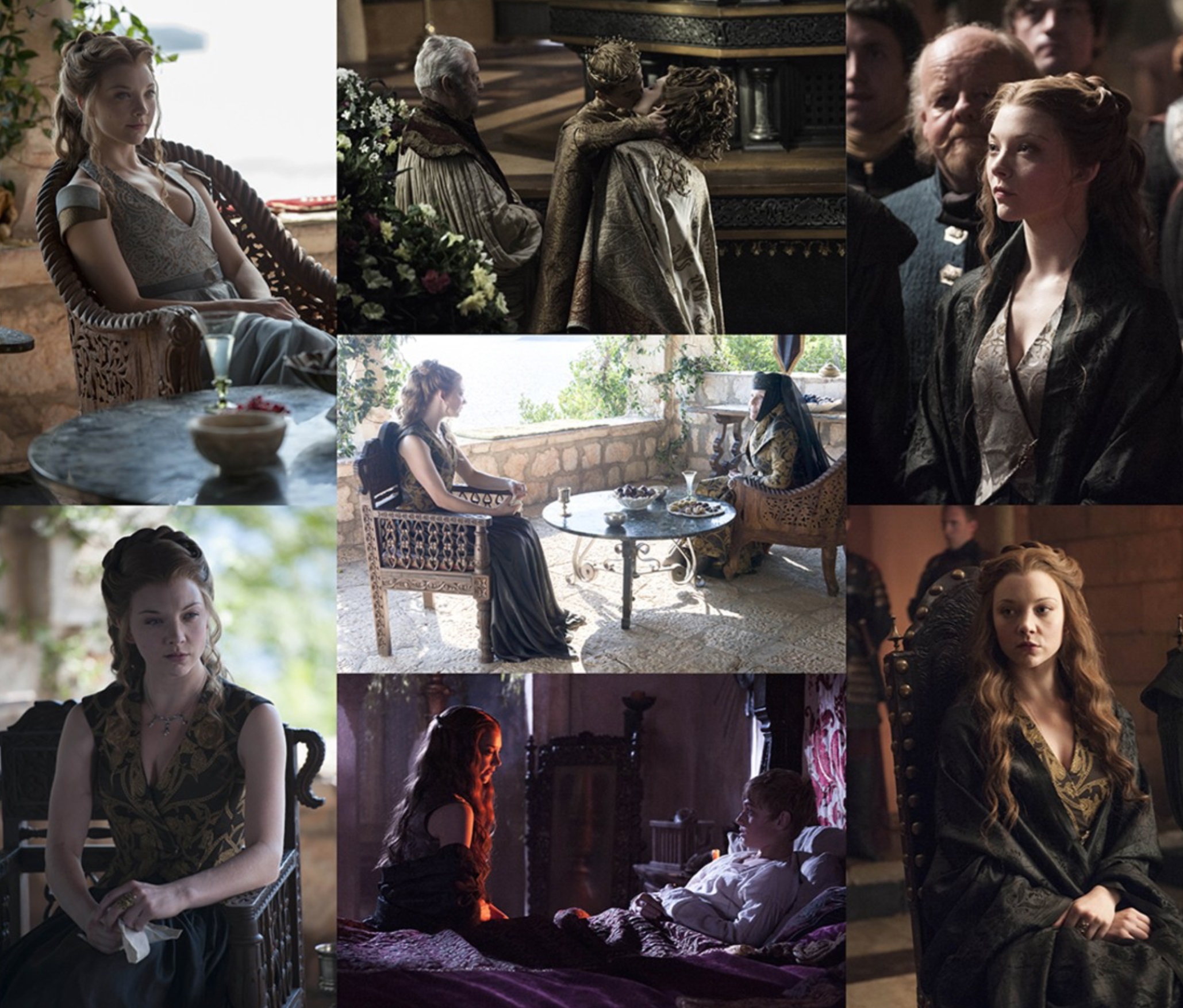
Following the murder of King Joffrey, the entire city of King’s Landing enters a mourning period and everyone dresses in black. Funnily, the black Tyrell mourning fabric is the exact same motif as the golden fabric Olenna wore to her granddaughter’s wedding. Margaery is entered into a time of uncertainty of her political standing, and if she dressed in her usual clothing she might be accused of being disingenuous, but she still needs to get Tommen on her side. Additionally, Tommen is quite young and so she takes into consideration how she will have to handle him differently than Joffrey. She compromises by wearing sleeveless gowns but covering her arms with a large shawl when she needs to cater to a certain crowd.
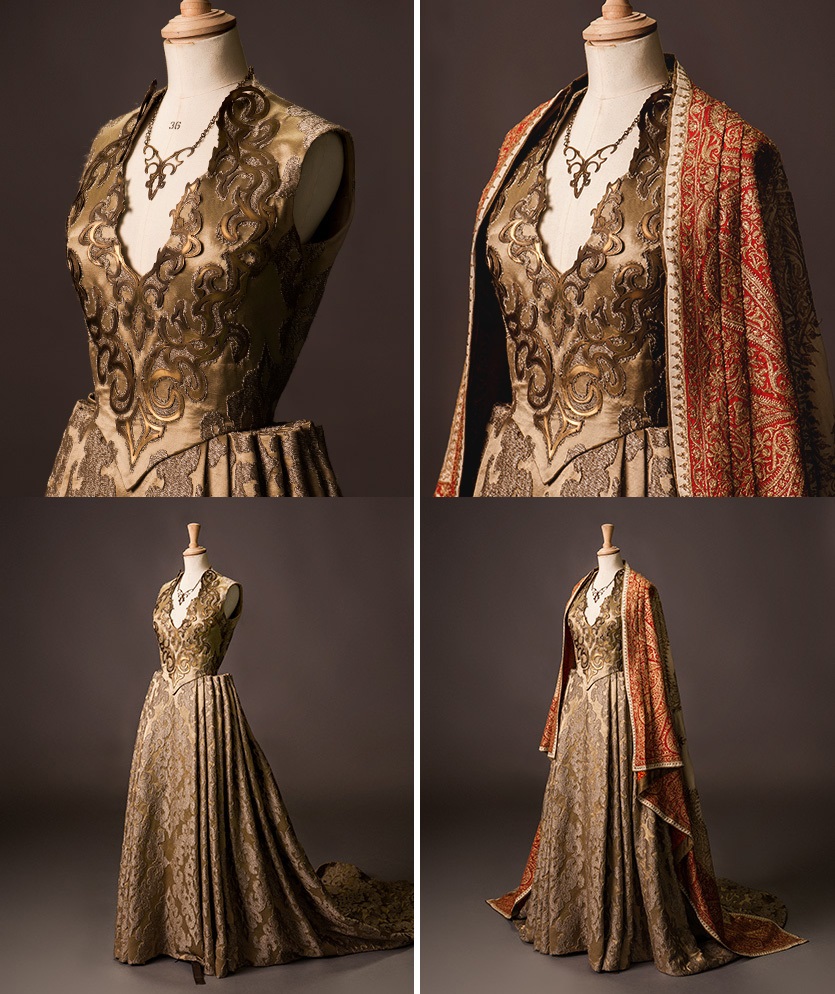
Once the mourning period is over, Margaery enters Season 5 as the newly anointed Queen of the Seven Kingdoms with her marriage to King Tommen Baratheon. Her third wedding dress makes a lofty statement with its golden brocade, exaggerated hip detail, and metal breastplate no doubt used as a not-so-subtle jab at Cersei’s past armor. In fact, she continues her fashion affront on Cersei by wearing Cersei’s style of bell-sleeved robe while mocking her to her face a few days later. Margaery then spends the rest of the season in queenly golden tones and much more regal gowns than when she was with Joffrey. Even her royal crown has been refinished entirely in gold. Tommen worships her as his wife and queen so she is dressing the part, for him, for the people of King’s Landing, and finally a bit for herself too, that is, until she is imprisoned by the Faith Militant.
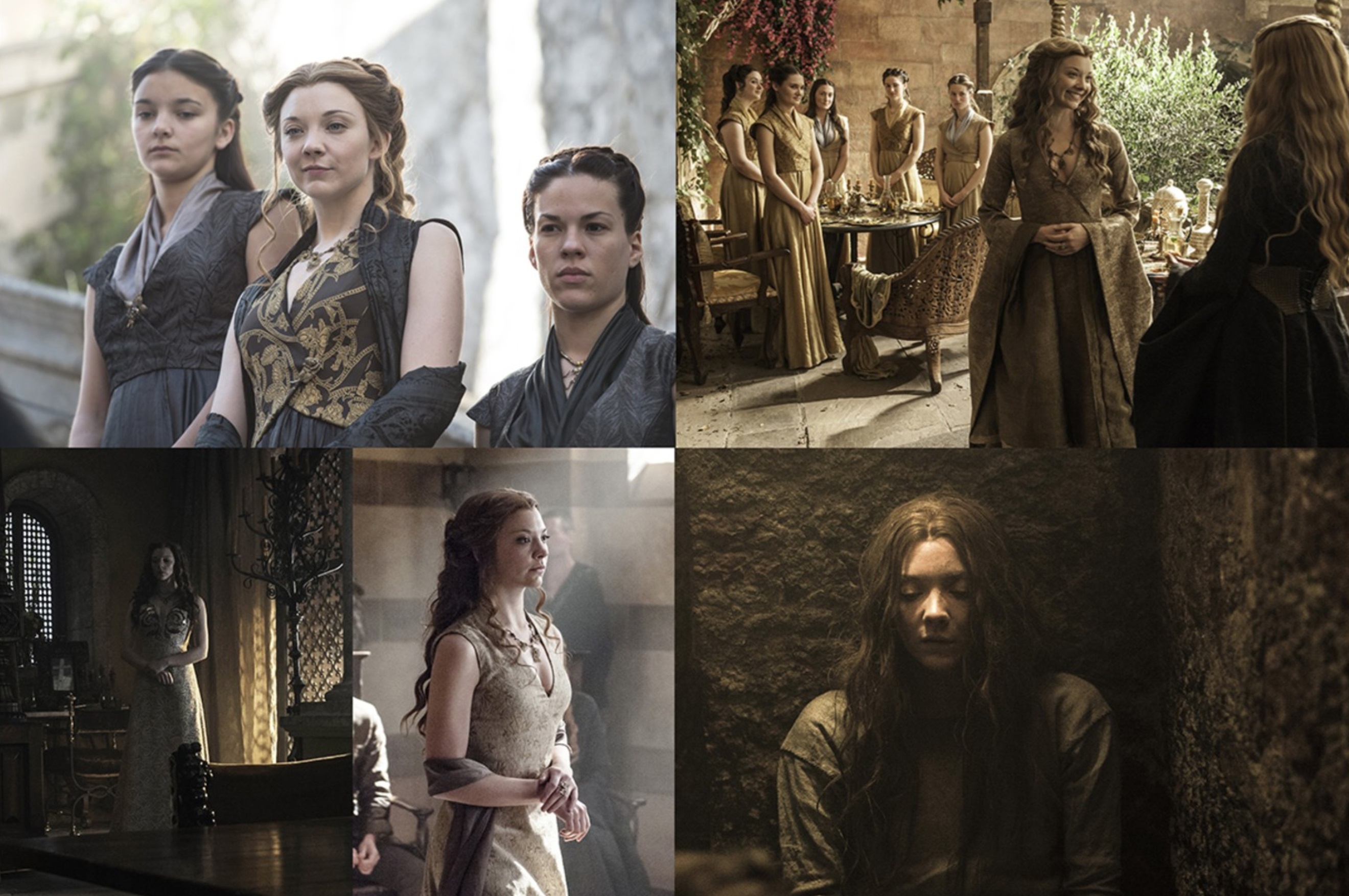
Throughout her Season 6 imprisonment, Margaery dons a brown prison sack, but it ends up working to her advantage. She must now prove to the High Sparrow that she has eschewed her “sinful” life of luxury and denounce all finery. It works, and by convincing Tommen to join the church and crown, she is freed. Immediately after, she begins wearing conservative, pious dresses that bear no relation to her former gowns at all. They are long-sleeved, high-necked, and even the blue of her family’s past dress is muddied.
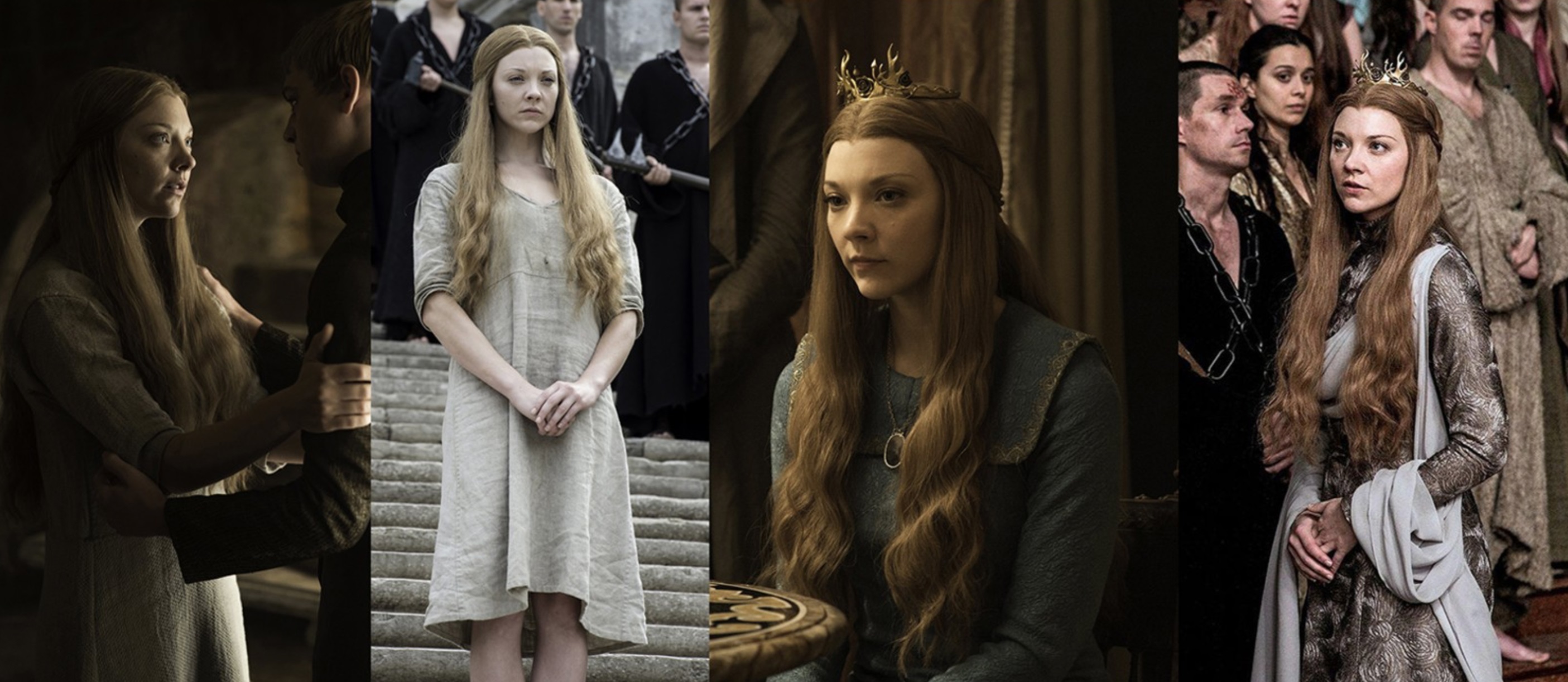
Margaery’s final gown she wears before her untimely death is at the same time hard and soft. The silhouette is as covered as can be but the floral mauve of the silk, coupled with the airiness of the draped chiffon give a soft, almost saintly appearance to her. She is looked to as a religious savior by many so she is now, once again, dressing to convey that and meet their expectations. There is almost a comical “good vs. evil” trope in how Margaery and Cersei are dressed during this scene. Both of their gowns are high-necked and long-sleeved and even have the same swag across the chest- Cersei’s chain and Margaery’s chiffon- but the villain is in dark and the saint is in light. This time, though, the villain won and Margaery met her demise via wildfire.
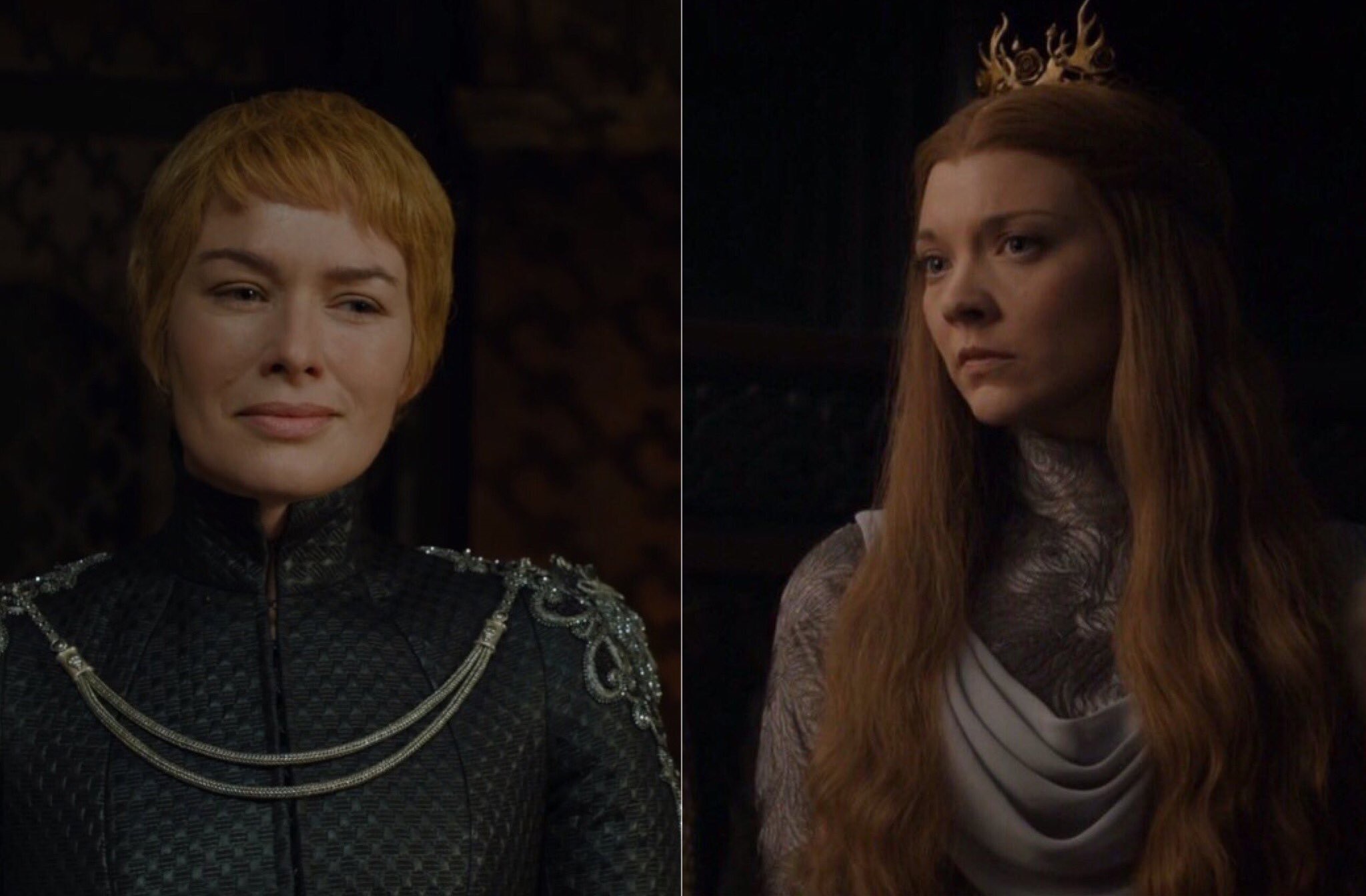
Margaery will forever be one of my favorite television characters, and hands down the best dressed. I only wish we got to see what she would have worn when winter finally came.
The post Game of Threads: A Lady’s Armor – Margaery Tyrell appeared first on Watchers on the Wall.
Via http://watchersonthewall.com
No comments:
Post a Comment